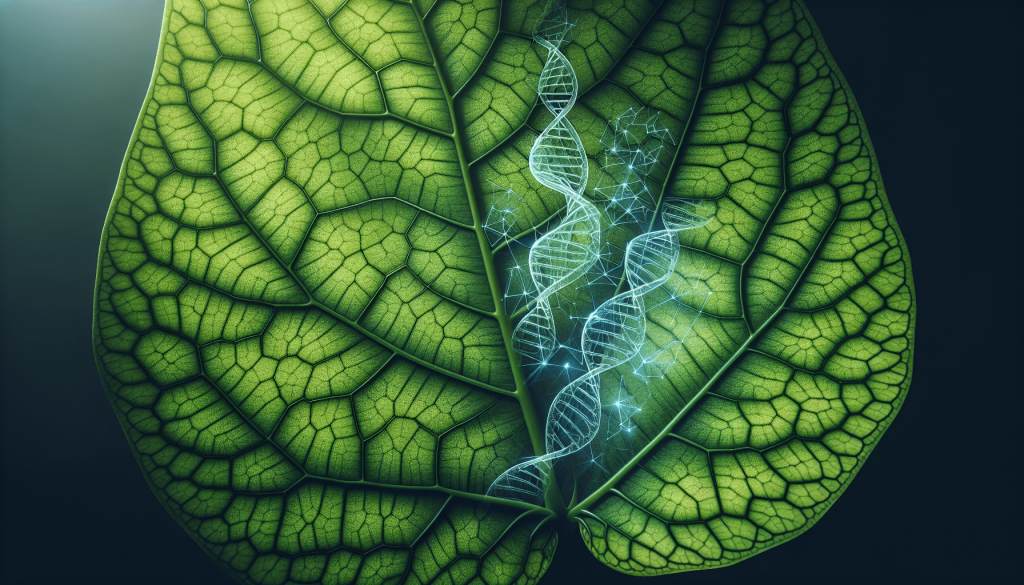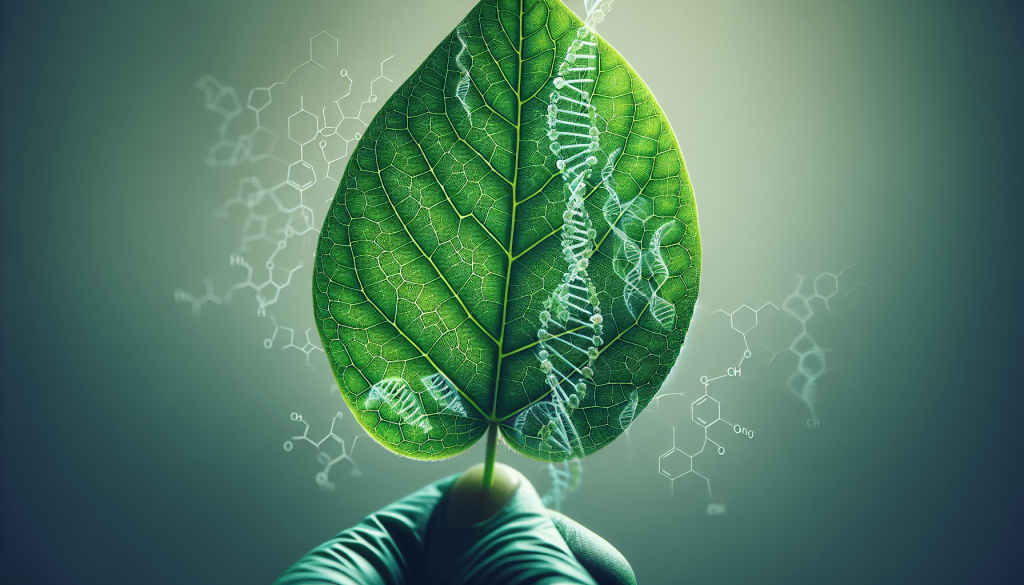This post may contain affiliate links. As an Amazon Associate, we may earn commissions from qualifying purchases.
In “The Role Of Epigenetics In Plant Adaptation And Stress Response,” you’ll explore how the invisible forces of epigenetics safeguard plants in changing environments. Discover how plants leverage intricate genetic switches to cope with stressors like drought, extreme temperatures, and pests. By diving into the fascinating world of epigenetics, you’ll uncover pathways that not only help plants survive but thrive, adapting with remarkable efficiency to their surroundings. This exploration offers a new perspective on plant resilience and the boundless potential of scientific advancement in agriculture. Have you ever wondered how plants manage to survive and thrive under different environmental conditions, from extreme droughts to heavy metal contamination in the soil? You might think it’s all about their genes, but there’s so much more to the story. In fact, one of the key players in this fascinating saga is something known as epigenetics.

What is Epigenetics?
Before we dive in, let’s get a handle on what epigenetics actually is. Imagine an orchestra playing a beautiful symphony. The notes are the genes, and the conductor who tells the orchestra when and how to play the notes is the epigenome. The epigenome consists of chemical compounds and proteins that can attach to DNA and direct actions such as turning genes on or off, controlling the production of proteins in certain cells.
Epigenetic Mechanisms
-
DNA Methylation: This involves the addition of methyl groups to DNA, which can turn genes off. It’s like putting a piano in a soundproof room; the piano is still capable of making music, but no one can hear it.
-
Histone Modification: DNA wraps around histone proteins, and chemical changes to these histones can impact gene expression. Think of this as tuning the strings of a guitar to create different sounds.
-
RNA-associated Silencing: Small RNA molecules can interfere with the expression of genes. It’s comparable to a conductor using a sheet to quiet specific sections of the orchestra.
How Epigenetics Helps Plants Adapt
Plants are sessile organisms, meaning they cannot move. This makes it crucial for them to have robust mechanisms for adapting to environmental changes. That’s where epigenetics comes in.
Seasonal Changes
Plants experience seasonal changes like winter cold and summer heat. Epigenetic mechanisms can enable plants to ‘remember’ these seasonal environments. For instance, vernalization is a process where plants require a prolonged exposure to cold before flowering. This epigenetic memory ensures that the plant only flowers under optimal conditions for survival.
Drought Resistance
Drought is one of the most challenging stressors for plants. Epigenetic modifications can help plants survive drought conditions by activating specific genes involved in water regulation and stress response. For example, certain plants activate stress-responsive genes which then produce proteins that help retain water and protect cellular structures from damage.
Heavy Metal Stress
Industrial pollution often results in soil contaminated with heavy metals. Some plants can tolerate these conditions through epigenetic modifications. These plants may activate genes that produce proteins to sequester harmful metals, thus preventing cellular damage.
Types of Environmental Stress and Epigenetic Responses
Plants encounter various kinds of environmental stresses. Here’s a breakdown of some major types and the corresponding epigenetic responses:
| Stress Type | Epigenetic Response |
|---|---|
| Salt Stress | Activation of genes involved in ionic balance. |
| Temperature Stress | DNA methylation changes to fine-tune the expression of heat-shock proteins. |
| Pathogen Attack | Small RNA molecules target and silence the genes of invading pathogens. |
| UV Radiation | Histone modifications that repair UV-induced DNA damage. |
The Science Behind Epigenetic Changes
Researchers use various techniques to study epigenetic modifications, such as:
-
Bisulfite Sequencing: This technique measures DNA methylation levels across the genome.
-
Chromatin Immunoprecipitation (ChIP): This helps identify histone modifications.
-
RNA Sequencing: Used to examine the changes in RNA molecules, giving insights into RNA interference.
Case Study: Arabidopsis Thaliana
Arabidopsis thaliana, a commonly used model plant, has been instrumental in advancing our understanding of plant epigenetics. Researchers found that Arabidopsis uses DNA methylation to regulate genes in response to cold stress. Moreover, mutations affecting histone modifications showed that these plants were more susceptible to stress, underscoring the importance of epigenetic regulation.

Practical Applications of Plant Epigenetics
Understanding epigenetics isn’t just fascinating; it has real-world applications.
Crop Improvement
Think of the agricultural implications! By harnessing epigenetic mechanisms, scientists can develop crop varieties that are more resistant to stresses like drought, salinity, and pathogens. This could lead to more stable food production and security.
Environmental Restoration
Certain plants can naturally purify contaminated environments through a process called phytoremediation. By understanding the epigenetic modifications that enable these plants to tolerate high levels of pollutants, we can potentially enhance their abilities to clean up industrial waste sites.
Biodiversity Conservation
Epigenetic studies can also aid in the conservation of endangered plant species. By understanding how these species adapt to their unique environments, conservationists can make more effective strategies to protect them.
Future Directions
While we’ve made significant strides in understanding plant epigenetics, there is still much to learn. Future research aims to delve deeper into the unexplored realms of this field.
High-Throughput Techniques
Advances in high-throughput sequencing technologies will allow scientists to explore epigenetic modifications on a larger scale and with greater detail. This could lead to breakthroughs in both fundamental science and practical applications.
Synthetic Biology
Imagine being able to reprogram plant genomes using epigenetic modifications. Synthetic biology aims to create such possibilities, which could lead to the development of ‘smart’ plants that can adapt to environmental changes more efficiently.
Epigenetics vs. Genetics: A Comparative Note
It’s important to understand the difference between genetic and epigenetic modifications:
| Feature | Genetics | Epigenetics |
|---|---|---|
| Definition | Study of genes and heredity | Study of heritable changes in gene function |
| Alteration Type | Permanent changes to DNA sequence | Reversible modifications without changing DNA sequence |
| Transmission | Usually inherited from parents | Can be acquired and sometimes inherited |
| Response Speed | Slower | Can be rapid |
Closing Thoughts
The world of plant epigenetics is a frontier offering exciting possibilities. From improving crop resilience to aiding in environmental conservation, the potential applications are wide-ranging and impactful. So next time you see a plant weathering a storm or flourishing in less-than-ideal soil, remember: it’s not just its genes doing the work; it’s a beautifully orchestrated symphony directed by its epigenome.
By understanding and leveraging this, you could be part of innovative solutions that address some of today’s most pressing challenges, all thanks to the incredible science of epigenetics.








